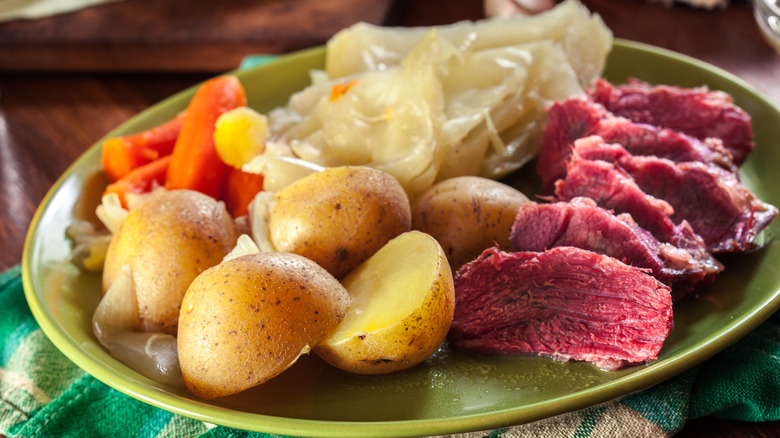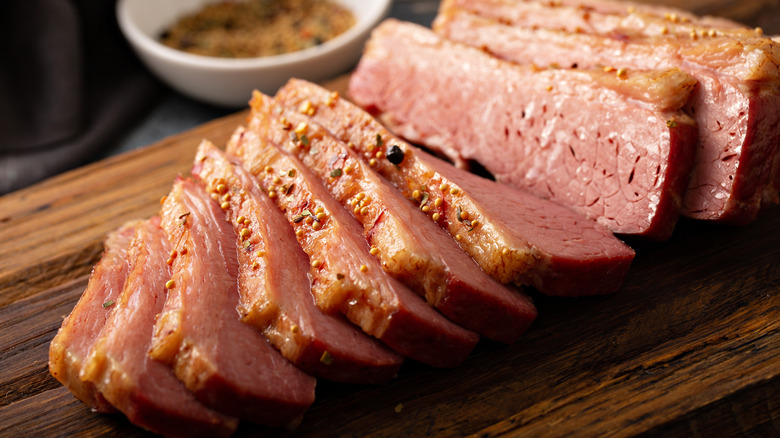The Secret To Making Corned Beef From Scratch
With St. Patrick's Day coming up, many home cooks will be menu planning meals that are traditionally eaten on March 17, including Irish soda bread, colcannon — a mix of boiled potatoes mashed with cabbage, kale, or other greens — and, of course, corned beef (via Delish). Often plated up with cabbage and root vegetables as a main dish on St. Patrick's Day, corned beef is thought of by many as being quintessentially Irish — but is it?
According to Smithsonian Magazine, it isn't. In fact, in Gaelic Irish history, cows were sacred and their meat was not consumed. When the Irish began immigrating to the United States in large numbers after the Great Famine of 1845, they were met with extreme prejudice in housing and overwhelmingly settled in areas that were Jewish, another ethnic group that had been ostracized by American society (via Smithsonian). There, they primarily bought their meat from Jewish butchers, who often utilized brisket, the cut of meat corned beef is made from. And that, more or less, is how the Irish association with corned beef began.
Regardless of the history, there's no denying that corned beef — a beef brisket that's braised with aromatics — is delicious, and a great dish to enjoy on St. Patrick's Day. Want to make your own at home this year, instead of relying on packaged corned beef that's often way too salty? There's one important step you can't omit.
It's all about the brine
Did you know that corned beef is traditionally brined before it's braised? That's actually what the word "corned" refers to — the dry cure, using large pellets of salt, or "corns," that traditionally preserved meat and kept it from spoiling (via Food Network). Today, corned beef can be made with either a wet or a dry brine, but according to Cook's Illustrated, both methods produce a similar result, and wet brining is much easier. And since the brine is rinsed off before cooking, there's little risk of your homemade corned beef turning out too salty, as the supermarket version often is.
Food Network suggests making a brine of kosher salt, sugar, mustard seeds, black peppercorns, cloves, allspice, juniper, and bay leaves — plus one more indispensable ingredient. That's pink curing salt, a salt that's made specifically for preserving, and which is dyed pink to distinguish it from regular salt. When Cook's Illustrated taste-tested corned beefs made with brine made with curing salt and without it, tasters narrowly preferred the version made with curing salt — but overwhelmingly preferred the distinctive rosy hue lent by the curing salt version. After a five-to-seven-day soak in brine, the beef is ready to be braised with more of those same aromatics, then served, of course, with cabbage and potatoes. Now all you'll need is a frosty pint of beer — green food coloring optional.

